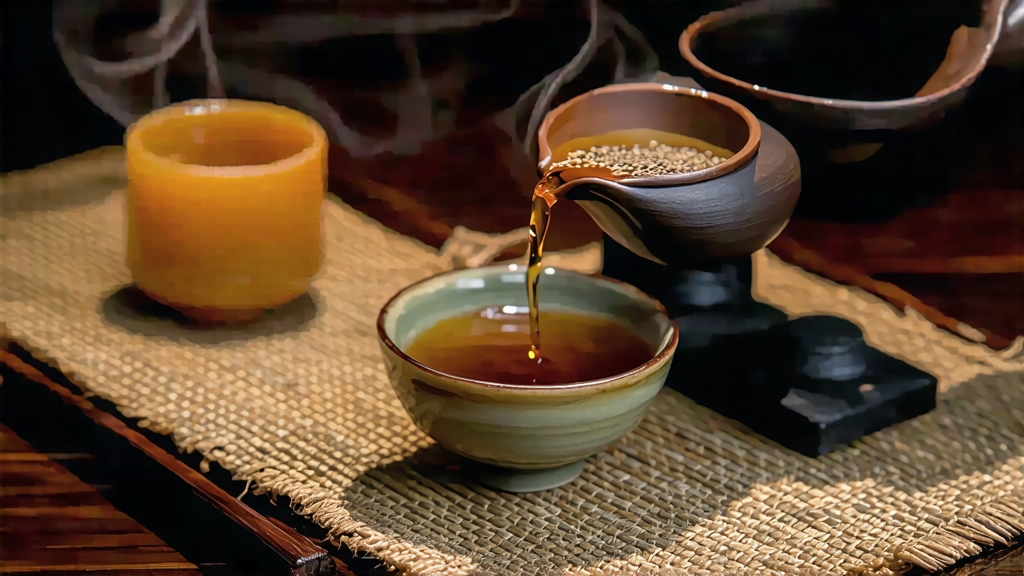
If oolong tea were a language, Phoenix Dancong would be its most eloquent dialect, spoken only on the steep granite ridges of Phoenix Mountain in northern Guangdong. Locals call it “Dancong”—literally “single bush”—because for centuries each mature tree was harvested, processed, and marketed individually, its unique fragrance so reliable that farmers gave it a personal name. Today the term embraces a fragrant family of more than eighty aromatic profiles, from gardenia to almond, but all spring from the same gene pool of ancient Song-dynasty specimens that still tower above the fog line at 700–1,200 m.
Legend traces the cultivar to the Southern Song (1127–1279), when the imperial retinue fled the Jurchen invasion and carried tea seeds from Fujian’s Wuyi cliffs. The seeds found a new home among the weathered granites of Fenghuang (Phoenix) Mountain, where diurnal temperature swings of 10 °C and mineral-rich springs coaxed the young bushes to develop an unprecedented perfume. By the Ming era, local She ethnic minority farmers had learned to graft the most aromatic individuals, creating clonal gardens that look more like orchards than tea terraces. The Qing court ennobled the tea in 1796, listing “Phoenix Song Zhong” among its imperial tributes; European tea hunters of the 19th century shipped it to Parisian salons under the romantic label “Chinese bouquet tea.”
Botanically, Phoenix Dancong belongs to the large-leaf Camellia sinensis var. sinensis, yet centuries of sexual reproduction have produced an arboreal habit—mature trees reach five metres, their gnarled trunks draped in air-rooted moss. Growers classify the population by fragrance type rather than garden row, a system unknown anywhere else in China. The most prestigious are the ten “aroma chiefs”: honey-orchid (Mi Lan Xiang), gardenia (Huang Zhi Xiang), almond (Xing Ren Xiang), ginger-flower (Jiang Hua Xiang), osmanthus (Gui Hua Xiang), night-blooming jasmine (Mo Li Xiang), pomelo (You Hua Xiang), magnolia (Yu Lan Xiang), cinnamon (Rou Gui Xiang), and licorice (Gan Cao Xiang). Each name is both promise and passport: when a buyer asks for Mi Lan Xiang, he expects the cup to taste like warm lychee honey dripping over orchid petals.
Harvest begins at Qingming (early April) when two leaves and a bud still wear a crimson edge from cool mountain nights. Pickers climb bamboo ladders tied to tree limbs, plucking only the solar-panel leaves that face east; these contain the highest ratio of ionone precursors responsible for the tea’s signature florals. By noon the wicker baskets descend to the village square where withering starts. Unlike Fujian’s Wuyi rock teas that are withered on water-heated bamboo troughs, Dancong is laid on rush mats under a high ceiling where mountain breeze alone reduces moisture to 68 %. Every twenty minutes the leaf is gently flipped, bruising the edges just enough to liberate enzymes without rupturing cell walls—an art that determines whether the final cup will sing or croak.
Oxidation is coaxed in three short waves. The first lasts twelve minutes at 28 °C, interrupted by a “cooling handshake” in which the leaf is piled 5 cm high for eight minutes to let endogenous heat accumulate. A second turn on 80 °C bamboo charcoal for ninety seconds denatures polyphenol oxidase, freezing the fragrance at its apex. The final roast is not a single event but a staircase: four cycles over six weeks, each lowering residual moisture by 3 % while adding a whisper of smoke. Master roasters use only longan-wood charcoal buried in ash as fine as talc; they listen for a faint “pop” that sounds like distant firecrackers, the sign that leaf veins are fracturing and releasing bound aromatics. Between roasts the tea sleeps in unglazed clay jars so that internal moisture migrates outward, preventing the sourness that once plagued export batches in the 1980s.
The finished strip is glossy, twisted like a dragon’s whisker, and releases a dry scent that changes every time you sniff—first mango, then sandalwood, then suddenly fresh cream. Because each tree is picked separately, batch sizes